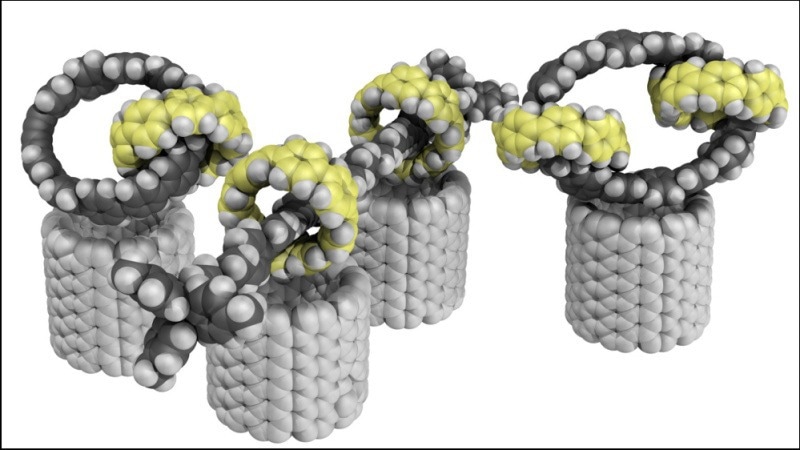A novel nanomaterial has emerged. Chemists at the University of Oregon have discovered a method to create carbon-based molecules with a distinct structural feature: interlocking rings.

Image Credit: University of Oregon
These linked-together molecules, like other nanomaterials, have fascinating capabilities that can be “tuned” by modifying their size and chemical makeup. As a result, they have the potential to be beneficial for a wide range of applications, including specialized sensors and novel types of electronics.
It's a new topology for carbon nanomaterials, and we’re finding new properties that we haven't been able to see before.
James May, Study First Author and Graduate Student, University of Oregon
James May is a graduate student in chemistry Professor Ramesh Jasti’s lab. The study was published on January 12th, 2023, in the Nature Chemistry journal.
Despite the fact that other types of interlocking molecules have been created, the Jasti lab’s method allows carbon nanotube-like structures to be joined together. It will enable chemists to examine the properties of the new materials in more depth by allowing them to make several different variations on the structure.
“You can create structures you can't with other methods,” says Jasti.
The group, for instance, used the method to create three interlocked rings in addition to a rod-like structure with several rings that can glide up and down. The breakthrough stemmed from Jasti’s research on nanohoops, which are carbon atom rings that are a pared-back variation of long, slender carbon nanotubes.
Because we're able to make these circular structures at will, I started thinking, could you make things that just don't exist in nature? That's where this idea of interlocking rings came in.
Ramesh Jasti, Chemistry Professor, University of Oregon
Identifying a series of chemical reactions that could generate complex ring structures required a creative approach. Their technique is based on strategically placing a metal atom in one of the rings. That metal initiates the chemical process that produces the second ring, pushing it to occur within the first ring. When that reaction occurs, the second ring becomes trapped and locked together with the first ring.
“We’re able to get chemistry to happen inside of a space where it might never occur,” May says.
If the size of the interlocked molecules varies, the rings are positioned differently, or different chemical elements are added to the mix, the molecules act differently. Researchers could improve the material to accomplish what they want it to do by making microscopic changes. Scientists are currently figuring out all the possibilities because the class of materials is so new.
However, Jasti’s group is more interested in their potential as sensors, where a change in the location of the rings in reaction to a certain chemical could result in fluorescent light.
They could potentially be used to develop flexible electronics and dynamic biomedical materials.
Typical carbon nanomaterials like carbon nanotubes, graphene or even diamond are static materials. Here, we have created new types of carbon nanomaterials that maintain their fascinating electrical and optical properties but now have capability to do things like rotate, compress, or stretch.
Ramesh Jasti, Chemistry Professor, University of Oregon
Journal Reference:
May, J. H., et al. (2023) Active template strategy for the preparation of π-conjugated interlocked nanocarbons. Nature Chemistry. doi.org/10.1038/s41557-022-01106-9.